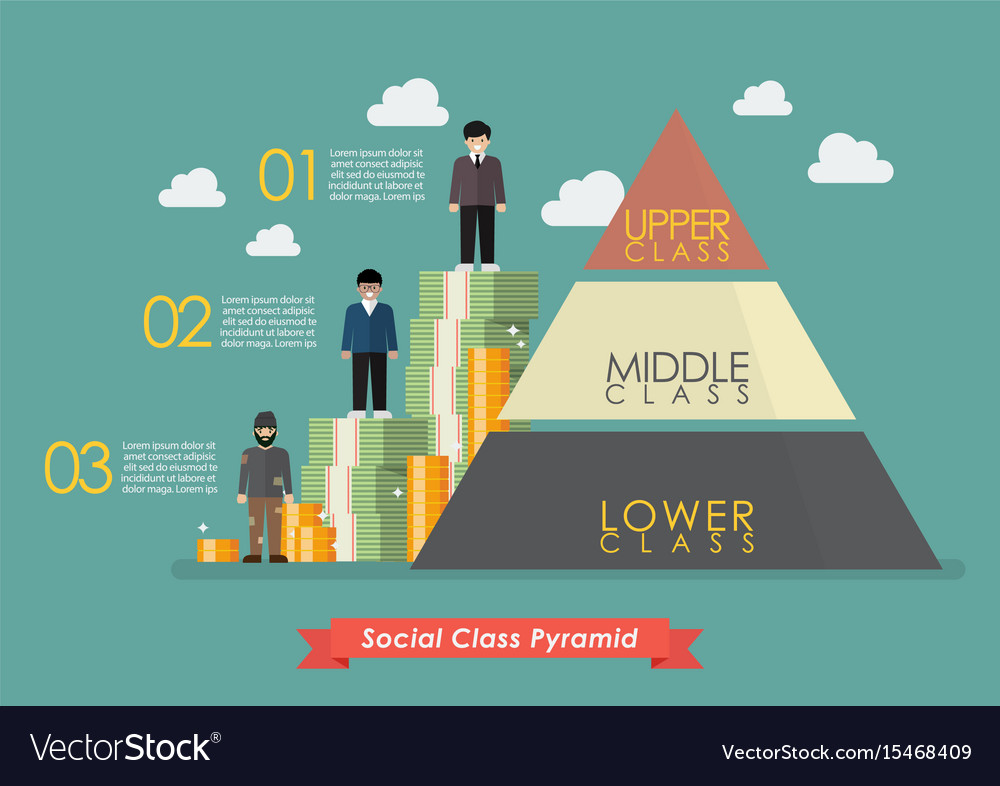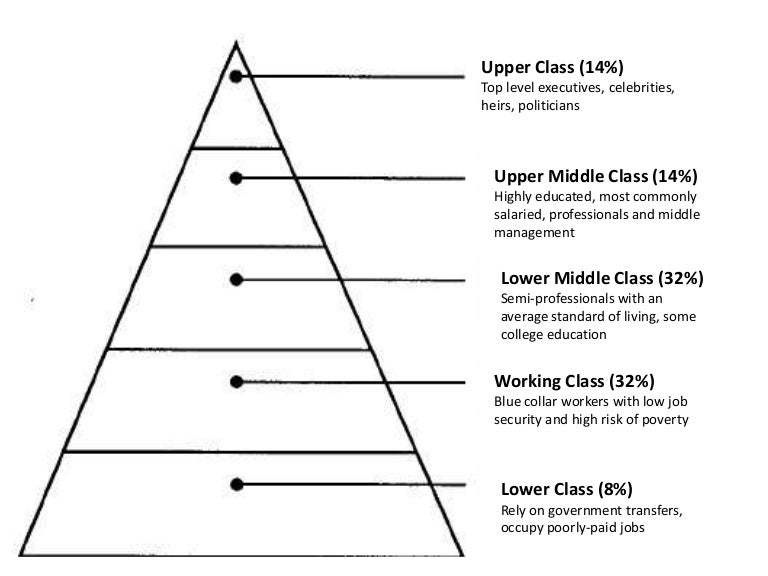Understanding Social Class: A Deep Dive Into American Society
Does the American Dream still hold water in a society increasingly defined by its socioeconomic strata? The reality is, social class profoundly shapes every facet of our lives, from opportunities and access to culture and even our individual beliefs about the world.
At its core, the concept of social class is fundamental to understanding the structure of society. It is the lens through which we can examine the dynamics at play within a community and beyond. The American class system, like those found in many capitalist societies, is often described in terms of distinct social classes. Individuals are categorized into groups based on their socioeconomic status, a reflection of their position within the broader social hierarchy. These categories are not rigid; theoretically, social mobility the movement between classes is possible. However, the social and economic barriers to upward mobility can be significant, creating persistent inequalities.
Social class, in essence, refers to the hierarchical distinctions between individuals or groups in a society. These distinctions are often drawn along lines of wealth, income, education, occupation, and even social status. It is a complex concept, a "messy affair" as some sociologists put it (Argyle, 1994), and how we define and measure social class is a subject of ongoing debate within the social sciences (Bullock & Limbert, 2009). The very existence of discrete social classes in contemporary societies is sometimes questioned, adding another layer of complexity to the analysis.
To illustrate the nuances of social class, let's consider a fictional individual named Emily Carter. The following table provides a snapshot of her life, illustrating the factors that contribute to her social class standing.
| Attribute | Details |
|---|---|
| Name: | Emily Carter |
| Age: | 45 |
| Education: | Master's Degree in Business Administration |
| Occupation: | Senior Marketing Manager at a Fortune 500 Company |
| Income: | $250,000 per year |
| Wealth: | $1.5 million (includes savings, investments, and real estate) |
| Social Status: | Considered to be in the Upper-Middle Class |
| Residence: | Affluent suburb of a major city |
| Lifestyle: | Frequent travel, fine dining, participation in cultural events. |
| Social Network: | Contacts include other professionals, business owners, and community leaders. |
| Reference: | U.S. Census Bureau |
Social class is a dynamic concept, constantly evolving as societies change. The way in which sociologists group people into social classes has transformed over time, influenced by shifts in the occupational structure and technological advancements. The Registrar General's Social Class Scale of 1911 offers an early example. Today, sociologists utilize more nuanced categories, understanding that factors like education, occupation, income, and even lifestyle choices contribute to a persons social standing.
Defining and measuring social class remains a central debate. Objective criteria, such as income and education, are frequently used. However, subjective criteria, including an individual's perception of their social standing and the attitudes of others, also play a role. Sociologists have outlined as many as six or seven social classes, including the upper class, upper-middle class, middle class, lower-middle class, working class, and underclass, based on a combination of factors.
The American class system can be analyzed through various lenses. Marx, Weber, and Rousseau, among others, have offered distinct perspectives on social stratification. Marx focused on the relationship to the means of production, Weber highlighted the interplay of power, property, and prestige, and Rousseau emphasized the role of inequality in social conflict. These perspectives offer valuable insights into understanding the complexities of social class.
The term "social class" itself, particularly within a capitalist context, refers to a classification of strata, with wealth, income, and occupation as the primary distinguishing factors. Horton states that "social class is a stratum of people of a similar position in the social status continuum." This means individuals within a social class share similar economic positions, educational backgrounds, and often, lifestyles.
The impact of social class on life chances is significant. It shapes access to education, healthcare, and housing, and it influences opportunities for social mobility. Social mobility, the ability to move between social classes, is not always easy. The economic and social barriers create a cycle of class reproduction, where individuals tend to remain in the same social class as their parents. For example, the children of wealthy parents often have access to better schools, networks, and resources, which gives them an advantage in climbing the economic ladder.
The four main social classes that are often explored include the upper class, the middle class, the working class, and the underclass. Each has unique characteristics, power dynamics, and levels of prestige within society.
The upper class, comprising a small percentage of the population, generally possesses significant wealth, often derived from inherited assets, investments, or ownership of businesses. They often have considerable political and social influence. Their class traits often include exclusive memberships, high-end education, and participation in exclusive cultural events. Those in the upper class often live in affluent neighborhoods and send their children to elite schools, thereby reproducing their social standing.
The middle class represents a larger segment of the population, generally consisting of professionals, managers, and skilled workers. They typically have a higher level of education and a more stable income than the working class. However, the middle class faces the pressures of economic uncertainty, with concerns about job security and the increasing cost of living. Their lifestyles vary, from the comfort of suburban living to the hustle of urban life. The values of the middle class often emphasize education, hard work, and achievement, which are seen as pathways for upward mobility.
The working class is composed of individuals employed in manual labor, service jobs, and other occupations that often require less formal education. While they may have stable employment, they often struggle with lower wages, limited access to healthcare, and less opportunity for social mobility. Many working-class families depend on multiple incomes, making financial stability a constant challenge. They prioritize practical values and value community and family bonds. Often, their class traits encompass a focus on immediate needs and a more limited exposure to diverse cultural experiences.
The underclass refers to those experiencing persistent poverty, unemployment, and a lack of access to basic resources. This segment of the population may face social isolation and limited opportunities for advancement. They may live in economically depressed areas with poor quality schools and limited access to social services. For some, the underclass can become trapped in a cycle of poverty, facing serious health challenges, crime and social stigma, which can severely limit their life chances. The challenges of the underclass often include systemic discrimination and the impacts of economic changes.
It's important to highlight that social class is not always a rigid construct. While upward mobility can be difficult to achieve, it remains theoretically possible. Marriage between individuals from different social classes, what is known as an exogamous marriage, can also blur the lines between classes. The constant movement of people between classes is essential to understand the dynamics of any society.
Social class, as a fundamental concept in sociology, helps examine the structure of society. Social structure is the distinctive, stable arrangement of institutions that allow human beings to live together. This structure is often analyzed in conjunction with social change, and in this way, both concepts inform the complex, evolving picture of societal organization.
Understanding the nuances of social class is critical, and it is also important to acknowledge that various social scientists and schools of thought have different models to understand the complexities of social class. For example, Max Weber emphasized the concept of power, property, and prestige as the primary measures of an individual's position in society. Others, like functionalists such as Robert K. Merton, focused on the distribution of social rewards. The insights of such theorists provide diverse perspectives on the structure of society.
The dimensions of social class are numerous. Income reflects the proceeds derived from employment or investments, while wealth encompasses an individual's complete possessions, including assets like cash, savings, investments, and real estate, after subtracting liabilities. Class traits, often called class markers, are the typical behaviors, customs, and norms that define each class. They indicate a person's exposure to a wide range of cultures and the resources available for leisure activities, hobbies, and vacations. The class system is a prime example of social stratification, a system dividing society into different classes based on factors like wealth, occupation, and education.
Sociologists continue to study social class, and there is still considerable debate about the very existence of discrete social classes. Understanding these complexities requires an awareness of the evolution of the concept, the different theoretical frameworks for its analysis, and a recognition of the impact of social class on individuals and society as a whole.



Detail Author:
- Name : Ed Brakus
- Username : klabadie
- Email : darryl83@emmerich.com
- Birthdate : 1995-03-31
- Address : 59559 Ruecker Inlet North Onie, VT 30661-5217
- Phone : 272.607.7446
- Company : Lemke, Konopelski and Cummings
- Job : Elementary and Secondary School Administrators
- Bio : Esse numquam repellat praesentium voluptatibus impedit dicta pariatur. Rem perspiciatis natus inventore est. Officia mollitia ut odit voluptas et aliquid et.
Socials
twitter:
- url : https://twitter.com/mathewmurphy
- username : mathewmurphy
- bio : Aut deserunt id autem. Ipsa architecto rerum ad eos omnis. Harum reprehenderit iure similique.
- followers : 6933
- following : 1672
facebook:
- url : https://facebook.com/mathew_murphy
- username : mathew_murphy
- bio : Omnis ratione necessitatibus reprehenderit.
- followers : 2840
- following : 1355
tiktok:
- url : https://tiktok.com/@murphy1988
- username : murphy1988
- bio : Officiis magni doloremque enim dolorum debitis sapiente et.
- followers : 5253
- following : 2480